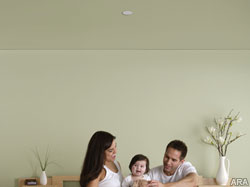
(ARA) – A home fire is as devastating as it is dangerous. Fires in the United States cost as much as $347 billion every year, taking into account medical treatments, property damage, fire department costs, lawsuits and more. Even more distressing is the fact that as many as 3,200 civilians and 85 firefighters lose their lives to fire every year. Those figures make it clear why it’s so essential to protect your family and your home from fire.
With the right precautionary steps, your home can be safe and secure. To start, go through your home with this fire safety checklist.
* Check smoke detectors to make sure they’re working properly and that batteries have full power. There should be at least one smoke alarm on each floor of your house.
* Consider investing in residential fire sprinklers. If your home already has them, make sure that they are inspected by trained professionals on a regular basis.
* Make a list of emergency fire, police and medical phone numbers and keep it near your house phone. You could also program the numbers into the cell phones of adult family members in case you have to leave the house before placing the call. Teach children how to call for help in case of an emergency.
* Make sure that your house number is clearly visible from at least 20 feet away. If trees or bushes are obscuring the house number, trim the foliage back.
* Keep flammable liquids away from heating sources. Store them in a cool location away from paper products and cloth materials.
It’s important to remember that while having smoke alarms is essential, they are just the first step in ensuring your family’s safety. They will alert you to a fire, but having a method that gives you more time to escape, like residential fire sprinklers, is an even more effective way to protect your family and home. Residential fire sprinklers are designed to contain and even extinguish a fire before the fire department arrives on scene.
Installing a fire sprinkler system has become more affordable, and is less expensive than installing granite countertops or upgraded cabinets in your home, and sprinkler heads now blend almost seamlessly into your ceiling. With improved technology, according to the National Fire Sprinkler Association, residential fire sprinklers are activated by heat, not smoke, and only the fire sprinkler closest to the fire will activate, which cuts down on water damage while still protecting your family and property.
Once you’ve gone through your fire safety checklist, it’s important to sit down with your family and create a detailed emergency plan. Think of at least two ways to escape from every room in the house and consider purchasing chain-link safety ladders for second-floor rooms. Then, take the time to do a family fire drill, ending in a designated “safe” place that you would go to in a real emergency. Practice a number of times throughout the year to make sure that everyone has the plan memorized. When you know how to escape a fire and protect your home and family, you’ll be able to rest easier.





